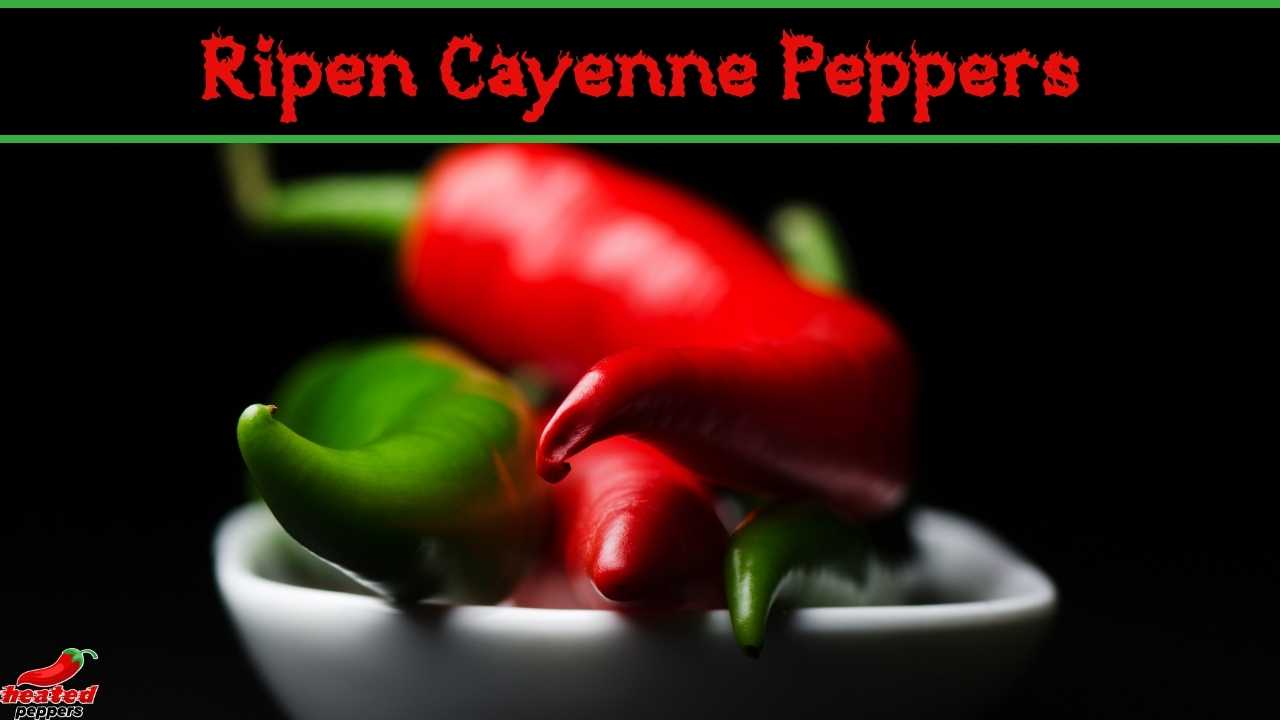Cayenne pepper is a popular spice that is used in a variety of dishes to add flavor and heat. While cayenne pepper is generally considered a healthy spice, it is important to know its nutritional content, including the amount of sodium it contains.
According to the USDA National Nutrient Database, one teaspoon (2.6 grams) of cayenne pepper contains only 1 milligram of sodium, which is a very small amount.
However, it is important to note that some brands of cayenne pepper may contain added salt or other ingredients that increase the sodium content.
It’s always a good idea to check the label of any spice or food product to confirm its sodium content.

Table of Contents
Is Cayenne Pepper High in Sodium?
Cayenne pepper is not considered a high-sodium food. One teaspoon (2.6 grams) of cayenne pepper contains only 1 milligram of sodium.
In comparison, the average salt intake per person in the United States is about 3,400 milligrams per day, which is much higher than the recommended daily intake of 2,300 milligrams or less.
To reach the daily recommended limit of 2,300 milligrams of sodium, you would need to consume 2.3 million milligrams of cayenne pepper, which is equivalent to approximately 870 teaspoons or 290 tablespoons. This is an unrealistic amount for most people to consume in a day.
Therefore, cayenne pepper can be a healthy addition to a low-sodium diet, as it contains only a small amount of sodium and can be used as a flavorful alternative to salt.
It can also provide numerous health benefits, such as improved digestion and metabolism when consumed in moderation.
Sodium in Cayenne: Garden vs Stores
The amount of sodium in cayenne peppers can vary depending on whether they are homegrown or store-bought.
Cayenne peppers that are grown in a garden or on a farm are generally lower in sodium than commercially grown cayenne peppers. This is because commercially grown peppers are often treated with salt to preserve them and enhance their flavor.
Homegrown or farm-grown cayenne peppers are typically grown without added salt or other chemicals, making them a healthier choice.
Is There Sodium in Cayenne Pepper POWDER?
Cayenne pepper powder is made by grinding dried cayenne peppers. While the process of grinding may cause some loss of nutrients, cayenne pepper powder still contains many of the same nutrients as whole cayenne peppers.
The sodium content in cayenne pepper powder is similar to that of whole cayenne peppers, with one teaspoon (2.6 grams) of cayenne pepper powder containing only 1 milligram of sodium.
Compared to other spices, cayenne pepper powder has a lower sodium content, making it an excellent option for individuals who are watching their sodium intake.
Is There Sodium in STORE-BOUGHT Cayenne Pepper Powder?
Store-bought cayenne pepper products may have added salt or other sodium-containing ingredients to enhance flavor or extend shelf life, increasing the sodium content.
Different brands of cayenne pepper powder may also have varying amounts of sodium. It is crucial to read the nutrition label carefully when purchasing cayenne pepper powder to determine the sodium content.
How Much Sodium Does Store-bought Cayenne Powder Have?
While cayenne peppers themselves are naturally low in sodium, the actual seasoning can have significantly more sodium depending on the company’s recipe.
Different brands of cayenne pepper powder may also have varying amounts of sodium. It is crucial to read the nutrition label carefully when purchasing cayenne pepper powder to determine the sodium content.
For example, a leading brand of cayenne pepper powder may contain 45 mg of sodium per teaspoon, while another brand may contain only 1.5 mg of sodium per teaspoon.
Here is a table comparing the sodium content of different brands of cayenne pepper powder:
| Brand Name | Sodium Content (per teaspoon) |
|---|---|
| McCormick Dark Chili Powder | 40 mg |
| Simply Organic Cayenne Pepper | 0 mg |
| Frank’s RedHot Original Seasoning Blend | 45 mg |
| Zatarain’s Cayenne Pepper Spice | 1.5 mg |
Check the labeling!
It’s important to note that the sodium content can vary depending on the specific product within a brand, and it’s always important to read the nutrition label to check the sodium content before purchasing any spice blend.
Cayenne pepper products that are marketed as “low-sodium” or “reduced sodium” may have less sodium than traditional products.
Choosing a brand with lower sodium content can be a great way to reduce sodium intake while still enjoying the flavor and health benefits of cayenne pepper.
How Are Cayenne Pepper and Table Salt Different?
Cayenne pepper and table salt are two widely used seasonings in the culinary world, but they have very different nutritional content.
Table salt is composed of two essential minerals, sodium, and chloride. Sodium is a mineral that our bodies need in small amounts, but too much of it can lead to health problems such as high blood pressure, stroke, and heart disease.
In contrast, cayenne pepper is a low-sodium spice, with only about 1 mg of sodium per teaspoon. Cayenne pepper is a nightshade that contains capsaicin, which is responsible for its spicy taste.
Capsaicin has been shown to have numerous health benefits, including improved digestion, increased metabolism, and reduced inflammation.
Using cayenne pepper as a salt substitute is an excellent way to add flavor to dishes without increasing sodium intake.
Here are some ways to incorporate cayenne pepper into your cooking:
- Seasoning meat: Sprinkle cayenne pepper on chicken, beef, or pork before cooking to add a kick of heat and flavor.
- Spice up soups and stews: Add a pinch of cayenne pepper to your favorite soups and stews to add depth of flavor.
- Make a spicy dip: Mix cayenne pepper with Greek yogurt or hummus for a delicious and healthy dip.
- Add to roasted vegetables: Toss roasted vegetables with cayenne pepper for an added kick of heat and flavor.
Here is a comparison of the nutritional content of table salt and cayenne pepper:
| Nutrient | Table Salt (1 tsp) | Cayenne Pepper (1 tsp) |
|---|---|---|
| Sodium | 2,300 mg | 1 mg |
| Chloride | 3,600 mg | N/A |
| Calories | 0 | 6 |
| Fat | 0 | 0.3 g |
| Carbohydrates | 0 | 1.4 g |
| Fiber | 0 | 0.7 g |
| Protein | 0 | 0.3 g |
| Vitamin A | 0 | 37mcg |
| Vitamin C | 0 | 1mg |
| Potassium | 0 | 36mg |
| Iron | 0 | .2mg |
As seen in the table, table salt contains a significant amount of sodium and chloride with no nutritional value. In contrast, cayenne pepper contains minimal sodium and has nutritional benefits such as vitamin A and vitamin C.
Conclusion
In conclusion, cayenne pepper is a low-sodium spice that can add flavor and heat to your dishes without significantly contributing to your daily sodium intake.
When using cayenne pepper powder or other cayenne pepper products, it is important to read the labels and consider the amount of sodium they contribute to your diet.
By incorporating cayenne pepper into your meals in moderation, you can enjoy its many health benefits while maintaining a healthy diet.





